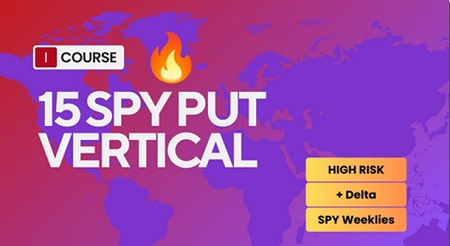No products in the cart.
My Options Edge – 15 SPY Put Spread
$199.00 $25.00
- Payment method: I will send the payment link to your email.
- Deliver by: Google Drive, Mega.nz
Category: Forex & Trading
Proof of payment:
Unlock Your Trading Potential – My Options Edge with SPY Spreads. My Options Edge is about finding and leveraging strategies that give you a distinct advantage in the market. This article analyzes the “15 SPY Put Spread” strategy, exploring its potential benefits and risks, so you can decide if it’s the right edge for your trading portfolio.
Table of Contents
My Options Edge
This section delves into the concept of My Options Edge, exploring what it means to have an edge in trading, how to identify potential edges, and strategies for cultivating a sustainable edge over the long term. We’ll look beyond specific trading tactics and focus on the mindset, skills, and analytical approaches required to consistently outperform the market.
Defining and Identifying Your Trading Edge
What exactly constitutes a “trading edge?” It’s more than just a lucky streak or a hot stock tip. A true edge is a statistically significant advantage that allows you to consistently generate positive returns over time. This advantage can stem from several sources: a superior understanding of market dynamics, access to privileged information (though ethical boundaries are crucial here!), mastery of a specific trading strategy, or even psychological resilience that allows you to remain disciplined in the face of market volatility.
Identifying your own edge requires honest self-assessment. What are you genuinely good at? Do you have a knack for analyzing financial statements, spotting emerging trends, or understanding complex economic indicators? Perhaps you possess an exceptional ability to manage risk or remain calm under pressure. Once you identify your strengths, you can focus on developing trading strategies that leverage them. For example, if you’re a skilled technical analyst, identify strategies focusing on chart patterns and trends. Alternatively, if you are a fundamental analyst who can keep up with news, look into options that will benefit with the increased volatility.
A crucial aspect of identifying potential edges is rigorous testing and analysis. This involves backtesting strategies using historical data to assess their performance under various market conditions. It also requires tracking your live trades and meticulously analyzing your wins and losses. What worked? What didn’t? What can you learn from your mistakes? This continuous feedback loop is essential for refining your strategies and solidifying your edge.
Cultivating a Sustainable Trading Edge
Having a trading edge isn’t a static thing that will never disappear. It’s an ongoing process of learning, adaptation, and refinement. The market is constantly evolving, and what worked yesterday may not work tomorrow. To maintain a sustainable edge, you need to be a lifelong learner. Stay up-to-date on market trends, economic developments, and new trading techniques. Read books, attend seminars, and network with other traders.
Adaptability is also crucial. Be willing to adjust your strategies as market conditions change. Don’t be afraid to abandon a strategy that is no longer working, even if it has been profitable in the past. The key is to remain flexible and responsive to the ever-changing dynamics of the market.
Another important aspect of cultivating a sustainable edge is managing your emotions. Fear and greed can lead to impulsive decisions that can derail your trading plan. Develop a disciplined approach to trading and stick to your plan, even when you’re tempted to deviate. This requires emotional intelligence, self-awareness, and the ability to remain calm under pressure.
Finally, remember that risk management is an integral part of any successful trading strategy. Always use stop-loss orders to limit your potential losses, and never risk more than you can afford to lose on any single trade. By managing your risk effectively, you can protect your capital and ensure that you can continue to trade even after experiencing losses.
The Role of Technology and Tools in Enhancing Your Edge
In today’s rapidly evolving financial markets, technology plays an essential role in enhancing your My Options Edge. Sophisticated trading platforms, advanced charting software, and real-time data feeds can provide you with a significant advantage over those who rely on more traditional methods.
Trading platforms offer a wide range of tools and features that can help you analyze market data, identify potential trades, and execute your strategies efficiently. Advanced charting software allows you to visualize market trends, identify patterns, and make informed decisions based on technical analysis. Real-time data feeds provide you with up-to-the-minute information on prices, volume, and other key market indicators.
In addition to these essential tools, there are also a variety of specialized software programs that can help you automate your trading strategies, manage your risk, and optimize your portfolio. Algorithmic trading platforms, for example, allow you to create and execute complex trading strategies based on predefined rules. Risk management software can help you monitor your exposure to various risks and adjust your portfolio accordingly.
However, it’s important to remember that technology is just a tool. It can enhance your edge, but it cannot replace the need for sound judgment, analytical skills, and disciplined risk management. The best traders are those who can combine the power of technology with their own expertise and experience to make informed decisions and consistently generate positive returns.
15 SPY Put Spread
This section provides a detailed examination of the 15 SPY Put Spread strategy, breaking down its components, analyzing its potential risks and rewards, and offering guidance on how to implement it effectively. It will not only evaluate the strategy’s mechanics but also delve into its suitability for different risk profiles and trading goals.
Understanding the Core Mechanics of the Put Vertical Spread
At its core, the 15 SPY Put Spread is a put vertical spread strategy. This involves two simultaneous options trades: buying a put option at a higher strike price and selling a put option at a lower strike price, both with the same expiration date. The objective is to profit from a moderate decline in the price of the SPY ETF (which tracks the S&P 500 index).
The beauty of a put vertical spread lies in its defined risk and reward. The maximum profit is capped at the difference between the strike prices of the two options, minus the net premium paid for the spread (the difference between the cost of buying the higher-strike put and the income received from selling the lower-strike put). Similarly, the maximum loss is capped at the net premium paid for the spread, minus the difference between the strike prices, and including commissions.
The strategy’s risk-defined nature makes it attractive to traders who prefer to know their potential losses upfront. Unlike buying a naked put option, where the potential loss is unlimited, the 15 SPY Put Spread limits your losses to the initial investment. This can be particularly appealing for novice options traders or those who are risk-averse.
However, it’s important to understand that the capped profit potential also limits the potential upside. While you can make a substantial return on your investment if the SPY declines as expected, you won’t be able to capture the full profit potential of a larger downward move. This trade-off between risk and reward is a key consideration when deciding whether the 15 SPY Put Spread is right for you.
Evaluating the Claimed 50% Return and 70% Win Rate
The most enticing aspect of the 15 SPY Put Spread, as promoted by its creator, is the claim of a 50% return on invested capital per trade and a backtested win rate of over 70% over the past five years. These numbers are undoubtedly attractive, but it’s crucial to approach them with a healthy dose of skepticism and conduct your own due diligence.
Backtesting, while valuable, has limitations. It’s easy to cherry-pick data or optimize parameters to create a seemingly impressive backtest result. The past performance of a strategy is not necessarily indicative of future results. Market conditions change, and strategies that worked well in the past may not work as well in the future.
Another factor to consider is the cost of the course and trading community that the creator offers. While the course may provide valuable insights into the strategy, it’s important to weigh the cost against the potential benefits. Are you paying for genuine expertise, or are you simply buying into hype? The same goes for the trading community. While it can be helpful to connect with other traders and learn from their experiences, remember that ultimately you are responsible for your own trading decisions.
Before committing to the 15 SPY Put Spread, take the time to research similar strategies and compare their performance. Look for independent reviews and testimonials from other traders. And most importantly, paper trade the strategy for a period of time to see how it performs in real-time market conditions. Do not use real money before you are comfortable with the strategy.
Assessing the ‘Set-and-Forget’ Simplicity and the No-Adjustment Claim
One of the most appealing aspects of the 15 SPY Put Spread, as advertised, is its supposed “set-and-forget” simplicity and the claim that no adjustments are needed after the initial trade setup. This is particularly attractive to traders who are looking for a low-maintenance strategy that requires minimal monitoring.
However, it’s important to question whether this claim is realistic. In the real world, market conditions are constantly changing. Unexpected events can occur, and volatility can spike without warning. Relying solely on a “set-and-forget” approach without any monitoring or adjustment could lead to significant losses.
While the 15 SPY Put Spread is designed to be relatively simple and mechanical, it’s still important to monitor your trades and be prepared to make adjustments if necessary. This might involve closing the spread early if the SPY moves sharply against your position or adjusting the strike prices if the market becomes too volatile.
The claim of “no adjustments needed” also raises concerns about the rigidity of the strategy. If the market deviates from the expected scenario, are you simply supposed to let the trade expire, even if it means incurring a loss? A more flexible approach, one that allows for adjustments based on changing market conditions, could potentially improve the strategy’s performance and reduce the risk of losses.
Risk Management Considerations and Potential Drawbacks
Like any trading strategy, the 15 SPY Put Spread carries inherent risks. While the capped loss potential is a definite advantage, it’s not a guarantee against losses. If the SPY moves sharply upwards or remains range-bound, the spread could expire worthless, resulting in a 100% loss of the initial investment.
Another risk to consider is the potential for early assignment. While it’s less common with put vertical spreads than with other options strategies, there’s always a chance that the short put option could be assigned before expiration. This could require you to buy shares of SPY at a higher price than expected, potentially resulting in a loss.
The 15 SPY Put Spread may need a specific type of market to be profitable. If the market is trending upwards or moving sideways, this strategy will likely result in losses. Before using the strategy, it’s imperative to do your own research and understand the risks involved. Consider your risk tolerance to make sure the 15 SPY Put Spread is an appropriate fit.
The strategy’s reliance on short-term options also introduces the risk of time decay. As the expiration date approaches, the value of the options in the spread will decline, even if the SPY remains relatively stable. This can erode your potential profits and increase the risk of losses, especially if you hold the spread for too long.
Integrating the 15 SPY Put Spread with My Options Edge
Understanding how the 15 SPY Put Spread aligns with your personal My Options Edge is crucial before implementation. This involves a thorough evaluation of how the strategy fits into your overall trading philosophy, risk tolerance, and investment goals. Recognizing if this particular strategy enhances your existing competitive advantage in the market is also a vital consideration.
For instance, if your My Options Edge lies in identifying overvalued market sectors, the 15 SPY Put Spread could be a tool to capitalize on your insight when you anticipate a decline in the SPY, which represents a broad market index. Alternatively, if you excel in technical analysis and can predict short-term price movements with a high degree of accuracy, this strategy can be used to execute your directional bias effectively.
The key is to ensure that the 15 SPY Put Spread complements your skills and market understanding. It should not be implemented in isolation but rather as a component of a well-thought-out trading plan. This plan should include clear entry and exit rules, position sizing guidelines, and risk management protocols, all aligned with your specific trading style and objectives.
Moreover, remember that the 15 SPY Put Spread, like any other strategy, has its limitations. It performs best under specific market conditions and may not be suitable for all types of market environments. Therefore, it’s essential to continuously monitor its performance and adapt your approach as market dynamics change. Integrating this strategy with your My Options Edge means understanding its strengths and weaknesses and knowing when to deploy it and when to refrain from using it.
Building an Effective Trading Plan Around the Spread
To make the 15 SPY Put Spread a successful element of your trading, it must be integrated within a comprehensive trading plan. This plan should provide a structured approach to identifying opportunities, managing risk, and evaluating performance. It starts with defining clear objectives for why you are using this strategy and how it contributes to your broader financial goals.
Key components of your plan should include precise entry and exit rules. These rules should specify the conditions under which you will enter and exit a trade, based on technical indicators, price levels, or other relevant market signals. For the 15 SPY Put Spread, this might include setting specific delta and strike price parameters for the put options you buy and sell, as well as determining a profit target and stop-loss level to manage risk.
Risk management is another crucial aspect of your trading plan. Determine how much capital you are willing to risk on each trade, and never exceed this limit. Use stop-loss orders to automatically close out your position if the market moves against you, and consider diversifying your portfolio across multiple strategies and asset classes to reduce overall risk.
Finally, your trading plan should include a system for evaluating your performance. Track your win rate, average profit per trade, and other key metrics to assess the effectiveness of the 15 SPY Put Spread and identify areas for improvement. Regularly review your plan and make adjustments as needed to adapt to changing market conditions and refine your trading skills.
Conclusion
The 15 SPY Put Spread presents an interesting opportunity for traders seeking a defined-risk, directional options strategy. It’s important to thoroughly research the strategy, understand its limitations, and integrate it into a comprehensive trading plan. By carefully considering the factors discussed in this article, you can determine whether the 15 SPY Put Spread aligns with your trading goals and risk tolerance and helps create your My Options Edge.
Sales Page: _https://www.myoptionsedge.com/spy-15-put-credit-spread
Be the first to review “My Options Edge – 15 SPY Put Spread” Cancel reply
Related products
Forex & Trading
$34.99
Forex & Trading
$29.00
Forex & Trading
$49.00
Forex & Trading
$99.00
Sale!
Forex & Trading
Sale!
Forex & Trading
Forex & Trading
$29.90
Forex & Trading
$59.00













Reviews
There are no reviews yet.